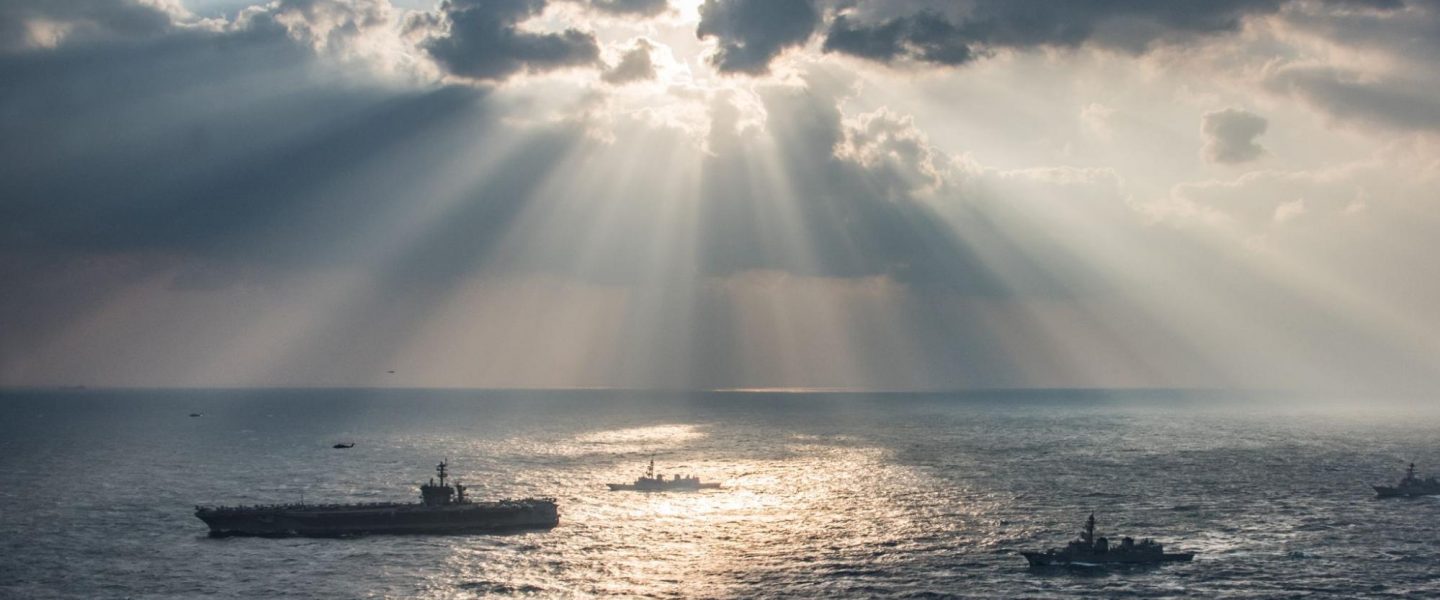Brace yourself. Major changes are coming that will take your breath away. (Excerpt from To Govern the Globe: World Orders & Catastrophic Change)
As wildfires worsen with each succeeding summer, ocean storms intensify, croplands dry up, and the seas rise, climate change will, by mid-century, uproot hundreds of millions of the world’s poor from their precarious perches along seashores, flood plains, and desert fringes.
Lest we forget, the movement of just 2 million refugees toward the borders of the US and the European Union between 2016 and 2018 produced a dramatic eruption of divisive populism. So let’s begin thinking about the political upheaval to come, particularly its impact on current world order, when global warming generates some 200 million refugees by mid-century.
After a decade of heated debate, the current consensus among policy makers in the Boston–Washington corridor of power is that US global power is fading, but its liberal world order of international organizations governed by the rule of law will almost certainly survive.
That confident assumption rests upon a limited understanding about the nature of world orders and the historic conditions for their rise and fall.
World orders, such as the current Washington consensus, are deeply rooted global systems exemplified by the United Nations and its recent climate conference, which drew hundreds of world leaders to Glasgow to search for solutions that can slow climate change. To uproot such a deeply embedded global system takes an extraordinary event, even a catastrophe.
Surveying some 700 years of world history, from the Black Death of 1350 through the coming climate crisis of 2050, new world orders seem to arise when a cataclysm, whether mass death or a maelstrom of destruction, coincides with some sweeping political transformation.
Since the age of exploration started in the 15th century, some 90 empires, large and small, have come and gone. But there have been only three major world orders — the Iberian age (1494–1805), the British imperial era (1815–1914), and the Washington world system (1944–circa 2020).
By the middle of the 21st century, if not before, global warming has the potential to equal if not surpass past catastrophes, creating conditions for the eclipse of Washington’s liberal world order — which has been marked by international organizations and the rule of law — and the rise of Beijing’s decidedly illiberal global system.
While environmental scientists have done an admirable job of charting the likely course of climate change for the rest of the 21st century, their counterparts in the social sciences, such as historians and political scientists, have shied away from parallel predictions about the political consequences of climate catastrophe.
So let’s make a start at correcting that oversight.
Alfred W. McCoy — Harrington Professor of History, University of Wisconsin-Madison — wrote the above comments for WhoWhatWhy to introduce the following excerpt from his book, To Govern the Globe: World Orders & Catastrophic Change (Haymarket Books), which comes out November 16.
Pressures on US Global Presence
In the United States, the impact of climate change is a key factor — along with economic pressures and demographic change — that will likely force a reduction or even a retreat from its worldwide military commitments.
More broadly, the juxtaposition of just a few key trends indicates the potential role of a gathering environmental crisis in catalyzing the shift to a new world order. First and fundamentally, America’s share of the gross world product has declined steadily, from 50 percent in 1950 to a projected 15 percent by 2024. But its defense budget has moved in the opposite direction, rising 150 percent from $274 billion in 2000 to $720 billion in 2019, with planned increases to $747 billion by 2024. (1)
Complicating Washington’s ability to sustain the high costs of its global military presence, its own 2018 National Climate Assessment predicted the country will face multiple consequences of climate change by 2050, if not before — including sustained drought, proliferating wildfires, coastal storm surges, far more intense hurricanes, damaged infrastructure, and declining harvests — all of which it is already experiencing to some degree.
The combined impact of “rising temperatures, extreme heat, drought, wildfire on rangelands, and heavy downpours” will cut US agricultural production back to the level of the 1980s. Indicating the lack of preparation for such cascading changes, the report warned, “The potential need for millions of people and billions of dollars of coastal infrastructure to be relocated in the future creates challenging legal, financial, and equity issues that have not yet been addressed.”
Indeed, another government report, issued in 2020, warned that 40 percent of the US population lives in coastal areas vulnerable to sea level rise, which has accelerated rapidly. By 2100, seas worldwide are very likely to rise at least twelve inches above their level in 2000; however, if carbon emissions continue unchecked, they could surge as much as 8.2 feet. (2)
Confronted by an ever-widening gap between rising military budgets and declining fiscal resources, Washington will likely have to reduce expensive overseas deployments and turn increasingly to a cost-effective covert triad for national defense — cyberwarfare, special operations forces, and satellite surveillance.
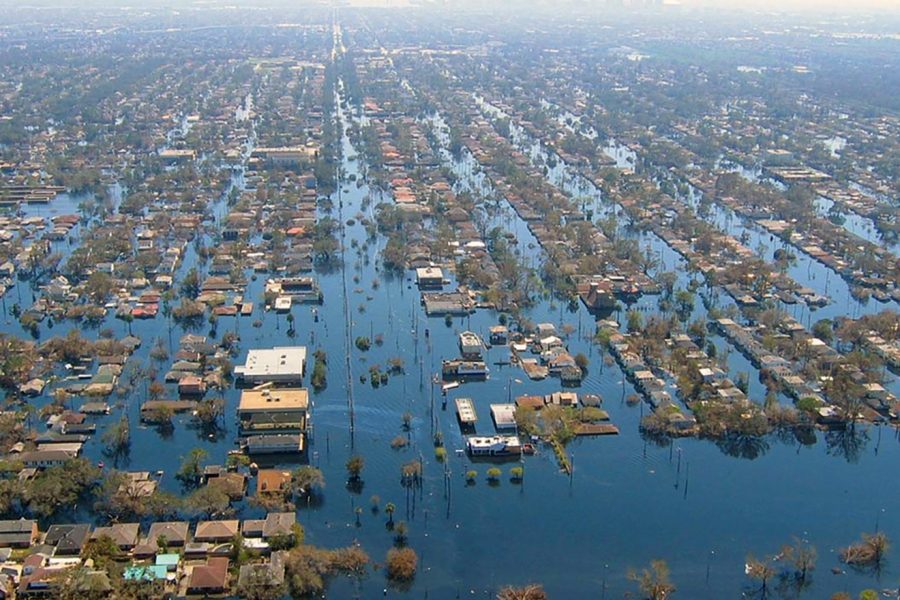
As its share of the world economy declines, Washington’s fiscal and political capacity to maintain its troop commitments to NATO is already fading. At the other end of Eurasia, Beijing’s expanding economy will draw longtime US allies into China’s orbit, weakening their support for American bases and joint military operations. China’s growing dominance will eventually make the costs of US overseas garrisons prohibitive, and Washington will likely retreat to some version of hemispheric hegemony.
Adding to the pressure for such a global retreat, two social forces, working in tandem, will likely decrease US capacity for overseas military missions. Most immediately, the escalating tempo of natural disasters from global warming will demand domestic troop deployments. “Climate change is an urgent and growing threat to our national security,” the Pentagon told Congress in 2015, “contributing to increased natural disasters, refugee flows, and conflicts over basic resources such as food and water.” Already, there have been major deployments for hurricane relief, and the need will only grow as disasters increase in scale and frequency with each passing decade. (3)
America also faces escalating social costs to sustain an aging society. By 2034, the United States will reach what the Census Bureau calls “a new milestone,” when people over age 65 (77 million) will outnumber children under 18 (76.5 million). Those older Americans will generate “greater demands for healthcare, in-home caregiving and assisted living facilities” that will likely divert fiscal resources from defense to social services. (4) The Congressional Budget Office predicts that federal spending on people older than 65 (Social Security, Medicare, and Medicaid) will climb steadily from 20 percent of the federal budget in 2019 to 50 percent by 2049, while both the labor force and the economy will grow at much slower rates than in decades past. (5) The ever-increasing costs of supporting senior citizens is likely to leave far less money for overseas bases or military interventions. From this synergy of domestic and foreign pressures, Washington’s global presence will probably start to fade within a decade.
Compounding such internal problems, an ever-increasing flow of climate change refugees from Mexico and Central America reaching the southern border may well contribute to an upsurge in populist nationalism within the United States. While the political consequences of anti-immigrant xenophobia are unpredictable, they could lead to sealed borders, a less welcoming society, and Washington’s further retreat from international leadership. (6) As tensions over climate change refugees rise on both sides of the Atlantic after 2030, the United Nations could become paralyzed by a great-power deadlock in the Security Council, as well as by rising recriminations over the role of its High Commissioner for Refugees.
As China pushes its maritime frontier farther into the Pacific, engulfing and threatening Taiwan, Washington may well be faced with a difficult choice — to either abandon an old ally, or fight a war it might lose.
Pummeled by these and similar crises from other climate change flashpoints such as Bangladesh, East Africa, and Southeast Asia, the international cooperation that lay at the heart of Washington’s world order for the previous 80 years would come under severe pressure amid faultfinding and reprisals.
In a world battered by global warming with millions of migrants streaming across borders worldwide, the hypernationalism of the Chinese global system will probably prove more appealing. As the international cooperation that was once the hallmark of the current world system recedes, Beijing’s transnational system marked by transactional diplomacy could slowly achieve something akin to global hegemony.
In the earlier transition to the Iberian age, the cataclysm of the Black Death converged with European conquests in Asia and the Americas to create a new world order. Similarly, the industrial revolution, combined with the cataclysm of the Napoleonic Wars, led to the emergence of the British imperial era. In a possible reprise of such a process, the geopolitical impact of China’s growing economic dominance over Eurasia, catalyzed by the mounting disruption of climate change, could gain sufficient force to supersede Washington’s world order with something new.
Washington’s Eclipse, Beijing’s Ascent
When will this convergence of geopolitics and climate cataclysm produce such a change? Beijing plans to complete both the technological transformation of its own economy and much of its massive trans-Eurasian infrastructure by 2025. That projected date complements a prediction by the US National Intelligence Council that “China alone will probably have the largest economy, surpassing that of the United States a few years before 2030.”
The accounting firm PricewaterhouseCoopers projected that by 2030 China’s GDP would grow to $36 trillion — over 40 percent larger than America’s of $25 trillion. (7) Since Beijing’s and Washington’s defense budgets represent 2 and 3 percent of their respective economic outputs, China’s military, already the world’s second largest, should be comparable or even more powerful than America’s around 2030, leaving Washington militarily dominant only in the Western Hemisphere. In late 2019, The New York Times reported that “in 18 of the last 18 Pentagon war games involving China in the Taiwan Strait, the US lost.”
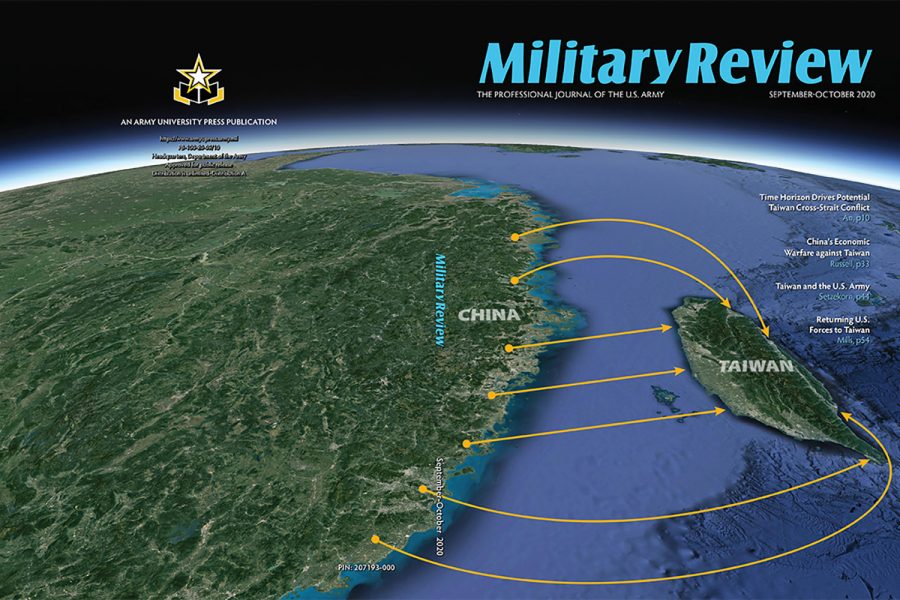
Those outcomes may explain how Beijing’s growing strength in the South China Sea could become the first step in Washington’s retreat from the Pacific littoral. As China pushes its maritime frontier farther into the Pacific, engulfing and threatening Taiwan, Washington may well be faced with a difficult choice — to either abandon an old ally, or fight a war it might lose. (8) In sum, climate change pressures on the current international system will likely converge with China’s expanding economic and military power around 2030 to catalyze the transition to a new hegemon and a new world order cast in its image. If so, the impact on the three intertwined issues that have long been the hallmark of global governance — national sovereignty, human rights, and energy — will be profound.
Compared to the way the unrivaled US military dominated the globe for the past 80 years, China’s hegemony will likely be more diffuse and less direct. Given its deep commitment to the defense of its frontiers, Beijing will probably concentrate its military forces near home, pushing the US Navy back toward Hawaii. Moreover, the Chinese state is run by Communist mandarins unaccustomed to and dismissive of the legalistic negotiations of international organizations, meaning it is likely to limit its global leadership to bilateral economic exchanges with individual nations or regional blocs.
Adding all this up, the Chinese global hegemony that may take shape around 2030 will be a looser world order than its American predecessor. Instead of military intervention or covert manipulation to assure compliance with preordained political standards, Beijing will ignore the corruption, incompetence, or inhumanity of its international partners to focus on the mutual advantage of economic exchange. Instead of aspirations to human rights and adherence to the judgments of international tribunals, its world order will privilege national sovereignty over universal principles. And instead of hundreds of overseas military bases and worldwide troop
deployments, China will likely concentrate its forces in the western Pacific and Indian Ocean.
In this more diffuse world order, each hegemon would dominate its immediate region — Brasilia over South America; Washington, North America; Beijing, East and Southeast Asia; Moscow, Eastern Europe; New Delhi, South Asia; Tehran, Central Asia; Pretoria, southern Africa; Ankara and Cairo, the Middle East. Judging from Beijing’s past actions, it seems likely that this divergence of its emerging global order from Washington’s will be especially marked in the defining areas of national sovereignty and human rights. From its suppression of Tibetan Buddhist identity in the 1960s through its repression of the Uyghur Muslims a half century later, its leaders have been unconcerned about the human rights of its religious minorities, just as it ignores such abuses by its allies. (9) As the first global hegemon in five centuries to emerge outside the succession of Western powers, China’s ruling Communist elite does not share the same ingrained cultural references.
The shift in global power from Madrid to Amsterdam, London, and then Washington was smoothed by a continuity in the debates over human rights within the same Western cultural tradition. So China’s rise represents a real rupture. After centuries of struggle to establish the principles of individual liberty articulated in the UN’s Universal Declaration of Human Rights, that seminal document’s moral imperative will probably fade during the coming decades. Similarly, the recognition of the world’s oceans as a shared commons for commerce among nations, hard won after centuries of war and diplomacy, will likely diminish as Beijing defends its claim to a mare clausum [international law term] over the East and South China Seas.
In parallel with President Xi’s political ascent since 2013, a generation of statist intellectuals has celebrated China’s rise as a new kind of empire and rejected most Western influences. Arguing that “the history of humanity is surely the history of competition for imperial hegemony,” prominent statist scholar Jiang Shigong posits that the Anglo-American powers created the UN as nothing more than “a site of struggle in the construction of world empires.” Now that the United States and its empire are suffering “state failure, political decline, and ineffective governance caused by … decadence and nihilism created by cultural liberalism,” China must, he says, take advantage of the current “historical transition … to construct world empire 2.0.” (10)
Judging from its diplomacy to date, Beijing will try to bind its world system together with the rhetoric of economic progress, while leading a global campaign to lift humanity’s forgotten millions out of their material misery. Yet, Beijing’s embrace of economic growth as the basis for both its domestic legitimacy and international influence may well condemn its global leadership to an early death.
In its hell-bent drive for development, Beijing has fouled the air of its cities with coal smoke and auto exhaust, damaged its greatest river by damming it for cheap electricity, and fished its coastal waters to exhaustion. (11) To repair the damage from that environmental degradation, Beijing adopted a generally successful five-year Air Pollution Action Plan in 2013 to cut coal consumption for home heating and reduce fine particulates in the air of major cities below 60 micrograms per cubic meter (still far above the World Health Organization’s maximum of 10 micrograms.) To combat global warming, President Xi announced in 2020 that China would reach carbon neutrality by 2060 — a date so far in the future that it might well be too late to stop the feedback loops of tropical fires and Arctic permafrost melting that are already creating an environmental crisis. (12)
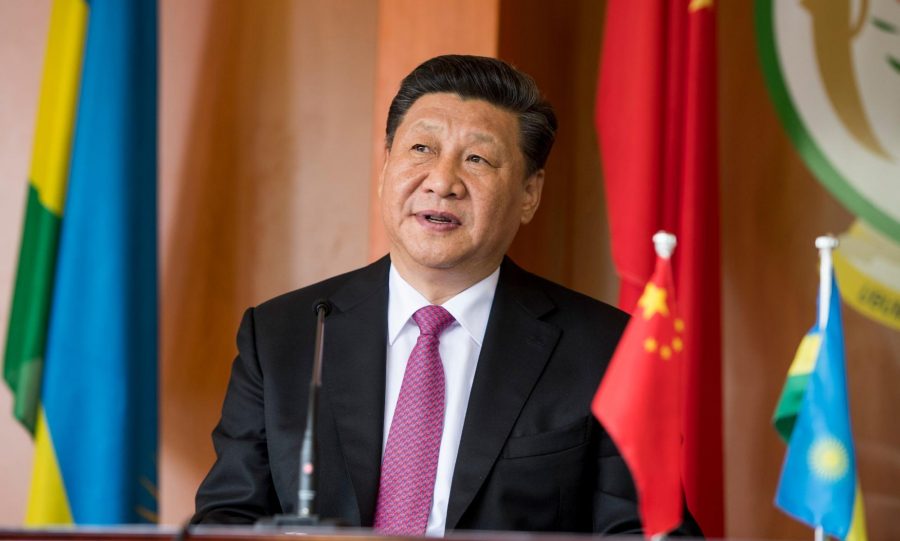
On the global stage, Beijing has been similarly conflicted. During the UN’s 2019 Madrid climate summit, China claimed a leadership role while simultaneously joining the United States and India in blocking the call for stricter emission targets. China also remained the world’s leading emitter of carbon dioxide (CO2 ) and even raised its coal-fired electrical capacity in 2018–2019 by 4.5 percent, while use elsewhere in the world declined. When the Madrid conference opened, China was actively constructing new coal-fueled electrical plants with a combined capacity of 121.3 gigawatts, far more than the 105.2 gigawatts in the rest of the world combined.
Moreover, in early 2020 the trade group Institute of International Finance reported that 85 percent of all projects under the BRI [China’s Belt and Road Initiative] entailed high emissions of greenhouse gases, particularly the 63 coal-fired electrical plants the project was financing worldwide. As global CO2 emissions only rose, China’s combination of increasing oil imports and continuing coal production made it the largest single source of pollution on the planet, accounting for 29 percent of the world’s total in 2017. (13)
Both at home and abroad, China’s global influence has thus become a major barrier to curbing greenhouse gas pollution. The recent American record has been marked by a parallel lack of progress, particularly under a climate change-denying president whose administration was focused on giving free rein to fossil fuel producers. Despite Donald Trump’s impassioned defense of the coal industry, market forces driving the shift to natural gas for electrical generation cut the country’s coal consumption by 18 percent. Nevertheless, rising pollution from natural gas and a continuing reliance on gasoline for road transport meant US emissions actually increased. Instead of meeting its commitment under the Paris climate accord for a 28 percent reduction in greenhouse gas emissions within a decade, the Trump administration adopted anti-environmental policies that will add 1.8 billion metric tons of CO2 to the atmosphere by 2035 — equivalent to the annual combined emissions of Britain, Canada, and Germany. (14)
Together, China and the United States accounted for 44 percent of total CO2 emissions in 2018, but they have failed, unlike the Europeans, to exercise a commensurate role in the ongoing transition to renewable energy. (15) In spite of the visible proliferation of photovoltaic panels and turbine towers worldwide, it will take an enormous effort to move the planet beyond its current dependence on fossil fuels for 80 percent of its total energy needs.
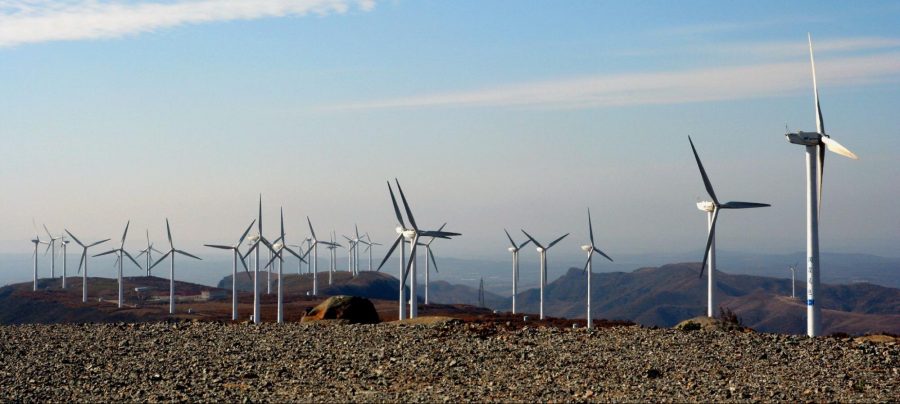
The UN’s “middle-of-the-road scenario,” which aims to keep the global temperature increase to 1.5°C above preindustrial levels, requires that electricity from all renewables (solar, wind, hydro, modern bioenergy) reach 48 percent in 2030 and 63 percent by 2050. That is a steep climb from the current world total from those four sources of just 11 percent. (16) Since 72 percent of all greenhouse gases come from energy for industry, heating, and transport, their reduction requires a sweeping two-phase transformation — first, a shift of all three activities to appropriate forms of electricity, and then a simultaneous conversion of the electrical grid to renewables. (17)
To transform an energy infrastructure built up over the past 150 years will require several decades of sustained investment and an ironclad political will, still largely absent in both China and the United States. Just as Beijing has promised to become carbon neutral by 2060, so Washington under the Biden administration has made the same commitment for 2050.
To advance toward that ambitious goal, the US needs to make some drastic, even daunting, changes by 2030: it must close all remaining coal-fired power plants, convert a quarter of the country’s homes to electrical heat pumps, raise annual sales of battery-powered cars from the current 1.5 percent to 50 percent of the total, and expand the nation’s electrical grid by 60 percent.
The country will also need to double, and then redouble, the annual pace of renewable energy construction, until solar and wind installations cover an area bigger than Colorado and Wyoming combined. Even if America and China meet those ambitious goals, there will still be enough residual CO2 accumulated in the atmosphere for the inertia of “committed warming” to drive world temperatures well past the UN’s target of 1.5°C to a dangerous average of 2.3°C.
In sum, the world can still slow the pace of climate change and avoid the most disastrous scenarios, but even a maximum effort cannot prevent the advent of serious environmental and social disruption. (18)
Over the past three hundred thousand years, humanity has made three basic energy transitions: first came the mastery of fire, then the domestication of draft animals and agriculture, and most recently reliance on fossil fuels. Without more effective leadership from the global titans, humanity’s fourth transition to renewable, non-emitting energy sources will likely be too slow to contain global warming at manageable levels. (19)
As Washington’s dominance fades and its share of the world economy falls steadily, leadership in this critical transition to renewable energy will probably fall to Beijing. Assuming that China indeed ascends to global hegemony sometime after 2030 and that it continues its long-standing policy of prioritizing the economy over the environment, Beijing’s global leadership will fail to slow the relentless pace of climate change, quite likely contributing to an untimely end to its own hegemony and leaving humanity without a functioning world order for the first time in five centuries. If that happens, then the latter half of the twenty-first century could be a period that is not only afflicted by incalculable problems, but also holds the potential, even the promise, of inaugurating a very different kind of world order.
Notes
- Hanke, All Mankind, 6–22, 57–70; Henry Stevens and Fred W. Lucas, eds., The New Laws of the Indies for the Good Treatment and Preservation of the Indians (1893), lxxxvi–xciv; Elliott, Empires, 132–33.
- Hanke, All Mankind, 82–105; Brian Tierney, The Idea of Natural Rights (2001), 272–74; Anthony Pagden, The Fall of Natural Man (1982), 109–18.
- Las Casas, Short Account, 12–17, 27–30; Hanke, All Mankind, 113–22.
- Hanke, All Mankind, 113–22.
- Juan Comas, “Historical Reality and the Detractors of Father Las Casas,” in Juan Friede and Benjamin Keen, eds., Bartolomé de las Casas in History (1971), 487–538.
- Hodgen, Early Anthropology, 361–64; Tierney, Natural Rights, 273–78; Pagden, Natural Man, 119–26; John L. Phelan, “The Apologetic History of Fray Bartolomé de las Casas,” Hispanic American Historical Review 49, no. 1 (1969), 94–99.
- Pablo Miguel Sierra Silva, Urban Slavery in Colonial Mexico Puebla de los Ángeles, 1531–1706 (2018), 35–42; Magnus Lundberg, Unification and Conflict (2002), 225–26.
- McNeil, Plagues, 177–92; Wolf, Europe, 133–35; Alfred W. Crosby, The Columbian Exchange (1972), 42–58; Yun-Casalilla, Iberian, 64, 149.
- Eltis, “Transatlantic Slave Trade,” 17–46; Wolf, Europe, 195–201; Herbert S. Klein, The Atlantic Slave Trade (2010), 11, 99–100, 216–17.
- Timothy Brook, Vermeer’s Hat (2008), 157–59, 160–61; Kamen, Empire, 285–91; Wolf, Europe, 138–39.
- Flynn, “Born,” 201–21; Kamen, Empire, 210–21; Brook, Vermeer’s Hat, 161–62, 170–79; Nicholas Cushner, Spain in the Philippines (1971), 135–36; William Lytle Schurz, The Manila Galleon (1939), 334–35; Herbert S. Klein and Sergio T. Serrano Hernández. “Was There a 17th Century Crisis in Spanish America?,” Journal of Iberian and Latin American Economic History 37, no. 1 (2019), 46; Jan de Vries, “The Limits of Globalization in the Early Modern World,” Economic History Review 63, no. 3 (2010), 730
- “Coins of Latin America,” Encyclopedia Britannica, https://www. britannica.com/topic/coin/Coins-of-Latin-America.
- Cardim, “Political Constitution,” in Bouza, Iberian World, 38–39; G. Alvarez et al., “The Role of Inbreeding in the Extinction of a European Royal Dynasty,” PLoS ONE 4, no. 4 (2009), 5174; Andrea Thompson, “Inbreeding, “ Live Science, 4/14/2009, https://www.livescience. com/3504-inbreeding-downfall-dynasty.html.
- José Javier Ruiz Ibáñez, “The Iberian Polities within Europe,” in Bouza Iberian World, 62–66; Yun-Casalilla, Iberian, 258–63.
- Kamen, Empire, 49–82; Wolf, Europe, 138–39; Parker, “Gunpowder Revolution,” 116–17; Burbank, Empires, 117, 128, 143–48.
- Kamen, Empire, 91–93; Yun-Casalilla, Iberian, 162–63; Gerhard Geissler, Europäische Dokumente aus fünf Jahrhunderten (1939), 85.
- Wolf, Europe, 138–39; Kamen, Empire, 91–93, 151–67, 192–93, 296; Guilmartin, Gunpowder, 109–12; Elliott, Imperial Spain, 249–56.
- Boxer, Portuguese, 160–61; Kamen, Empire, 294–95.
- Kamen, Empire, 70–77.
